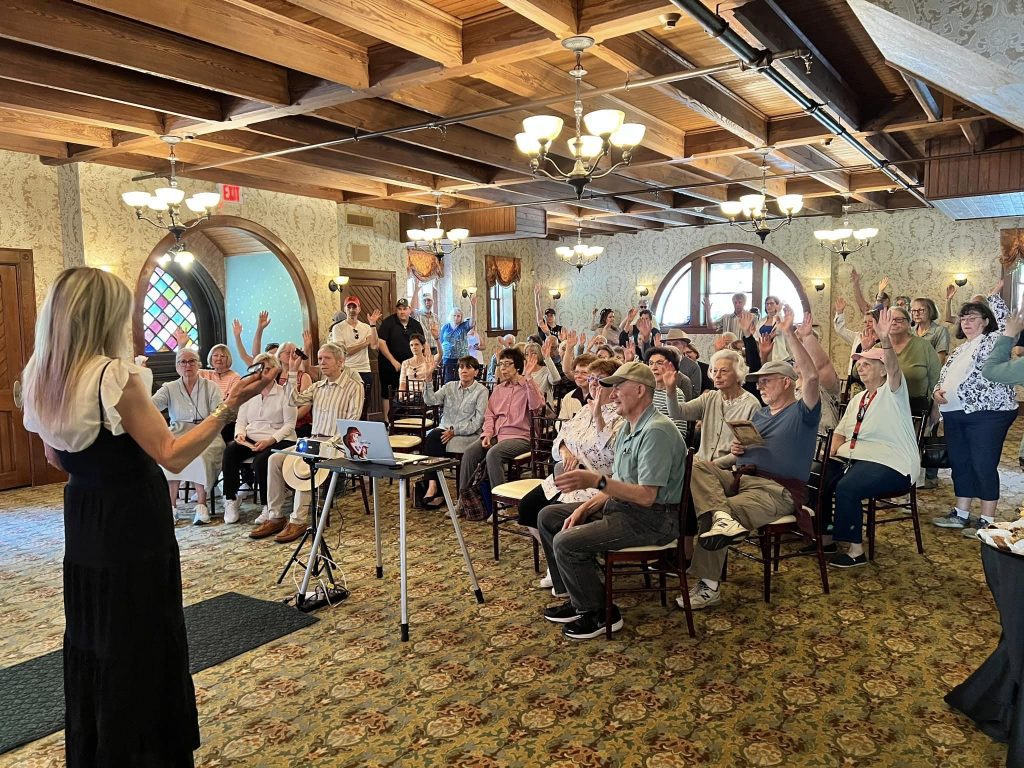

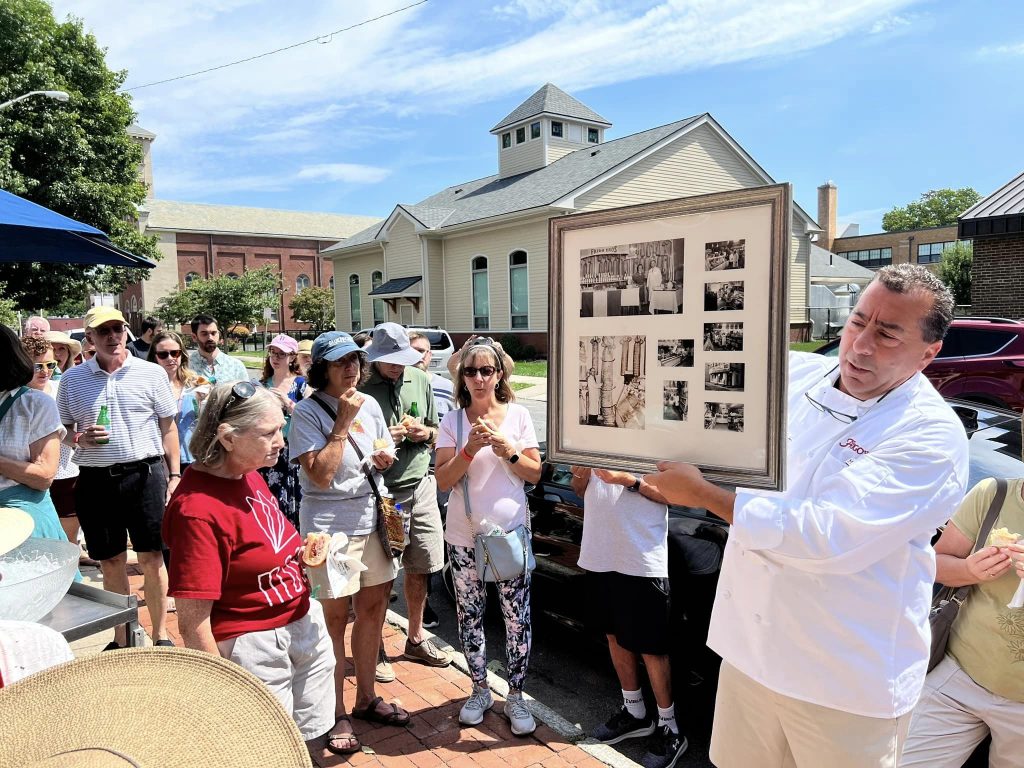
Second Saturday Tours are historic tours through Springfield, Massachusetts—organized by the Springfield Preservation Trust in partnership with the Springfield Museums. The 2023 season was sponsored by Mass Cultural Council and Springfield Cultural Council. The 2024 season was sponsored by Daboul Family Charitable Trust. The current season is sponsored by Mass Cultural Council and Springfield Cultural Council
Per the name, the tours fall on the second Saturday of each month from April to October. Each tour is a deep dive into a specific aspect of Springfield's history, acting as an educational tool for the public to learn about Springfield's historically, architecturally, and culturally significant buildings. Meanwhile, increased exposure for Springfield's historic buildings—and the importance of protecting and preserving them—makes the tours an effective advocacy tool, as well.
Second Saturday Walking Tours are some of the most visible and well-attended events of the year, with 80-100+ attendees gathering for each tour.
If you want to learn more about the Second Saturday Tours or talk with us about the potential for sponsoring or hosting a future tour, please email info@springfieldpreservation.org.
Thank you, sponsors



2025 TOURS
Pages of the Past: A Bus Tour of Springfield’s Historic Libraries
About this event
Join us for a journey through Springfield’s rich literary and architectural history on the Pages of the Past bus tour! Hosted in partnership with The Springfield Libraries and Springfield Museums, and sponsored by Peter Pan Bus Lines and Springfield Cultural Council, this guided tour will take you through the city’s most historically significant libraries, offering a glimpse into their storied pasts and lasting impact on Springfield’s cultural and educational landscape. Buy tickets through Eventbrite www.eventbrite.com/e/pages-of-the-past-a-bus-tour-of-springfields-historic-libraries-tickets-1244912299199?
Explore landmarks such as the Springfield Central Library along with current, as well as former, neighborhood branch libraries in Forest Park, Indian Orchard, East Springfield, Mason Square, and beyond. Our guide, Dr. Kate Benson, will share the histories and evolution of these architectural and cultural landmarks—from their founding by influential figures to their roles in shaping the community’s access to knowledge and learning. Whether you’re a history buff, book lover, architecture fan, or simply curious about the city’s past, this tour promises a unique and enlightening adventure—all from the comfort of a Peter Pan Bus!
About the Bus Tour & Presenter
The newly relaunched Annual Bus Tour is co-presented by the Springfield Preservation Trust, Springfield Museums, and Springfield City Library, and is sponsored by Peter Pan Bus Lines, a Springfield institution since 1933.The bus tour will be presented by Dr. Kate Benson. Dr. Benson is the award-winning author of Hospital Hill and its companion novel, Shadows in the Ward. She is also the author of Behind the Walls, a volume on the history of insane asylums in institutions in New England. She is a special education teacher and architectural photographer who leads a lecture series on the history of mental illness and its treatment. She is currently hard at work on a number of asylum projects. She is also the owner of Otherwords Press, an independent publishing imprint representing authors from all over the world. Kate is a Springfield Preservation Trust board member and lives in Western Massachusetts .
About the Springfield Preservation Trust
Founded in 1972, the Springfield Preservation Trust strives to preserve and protect properties in Springfield that have architectural or historic significance. As the only non-profit, non-government advocacy group for historic preservation in Springfield, the Trust will continue to be the voice of preservation into the future. Learn more at springfieldpreservation.org.
About Peter Pan Bus Lines
Peter Pan Bus Lines operates the largest privately-owned bus transportation network in the United States with over 1,000 daily departures to over 100 destinations in the Northeast and Mid-Atlantic states. Peter Pan coaches travel over 25 million miles every year, or the equivalent of nearly 100 trips to the moon annually. That translates to one of Peter Pan’s buses traveling around the world three times every day. The business was founded in Springfield in 1933 by Peter C. Picknelly and is now four generations strong, still operated by the Picknelly family. Learn more at peterpanbus.com.
Springfield Central Library: An Architectural & Historical Walking Tour
About this event
Join us for an all-access, interior and exterior tour of the Springfield Central Library building at 220 State Street! This 1912 building, funded by Andrew Carnegie and the citizens of Springfield, is an important part of the downtown Springfield landscape and a contributor to the Quadrangle–Mattoon Street Historic District.
The tour is part of the Second Saturday Tour series and will feature a full tour of the building interior, including the fourth floor, historical insights while circling the building’s exterior, and a brief history on the development of the Quadrangle. Along the tour, you’ll gain knowledge of the history of libraries in Springfield and the architecture of the Central Library building. Additionally, the tour will showcase how historical buildings adapt to modern usage. Included on the tour is an up-close look at the Rotunda which features open books and the bust of Athena.
This walking tour departs from the Library’s Rotunda at 10:30am and ends at 12:00pm. The tour is $5 for Springfield Preservation Trust and Springfield Museums members and $10 for non-members, payable in advance on Eventbrite.
The Second Saturday Walking Tour series is co-presented by the Springfield Preservation Trust and Springfield Museums and is generously sponsored by the Springfield Cultural Council and Mass Cultural Council.
About the Tour Guide
Maggie Keane (she/her) is a reference librarian at the Springfield City Library. Growing up in Holyoke, she has always been interested in local history from hearing family stories about Mountain Park to going to museums in the area. Nowadays you can find her at the Springfield Central Library running programs, helping folks with local history requests, and spouting fun facts about the building to all those interested.
About the Springfield Preservation Trust
Founded in 1972, the Springfield Preservation Trust strives to preserve and protect properties in Springfield that have architectural or historic significance. As the only non-profit, non-government advocacy group for historic preservation in Springfield, the Trust will continue to be the voice of preservation into the future. Learn more at springfieldpreservation.org.


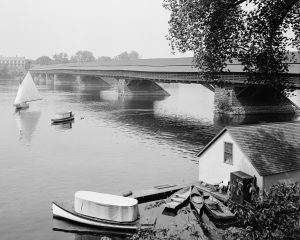
Come learn about the historic Springfield riverfront, including histories of the bridges, steamboat access, buildings, and even the sewage system.
Derek Strahan will be leading the Second Saturday Tours series on June 14th at 10:30am. It will start at Riverfront Park, at the parking lot directly across from the end of State Street. The Springfield Preservation Trust walking tours this season are sponsored by the Springfield Cultural Council and Mass Cultural Council.
This walking tour departs from the Riverfront Park at 10:30am and ends at 12pm. The tour is $5 for Springfield Preservation Trust, Springfield Museums, and $10 for non-members, payable in advance on Eventbrite or at the tour's outset. Purchase through https://www.eventbrite.com/e/springfields-lost-riverfront-a-walking-tour-tickets-1341067592269.
The Second Saturday Tours series explores historic Springfield and is co-presented by the Springfield Preservation Trust and Springfield Museums and is generously sponsored by the Springfield Cultural Council and Mass Cultural Council.
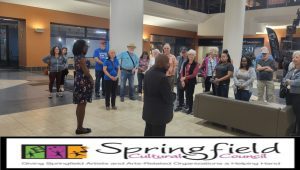
Immerse yourself in the history of Springfield by visiting locations and meeting people who embody the perseverance, ingenuity, and resilience of some of the city's early residents. The Underground Railroad, a network of many people and places, played a significant role in Springfield's history, making it a destination for freedom seekers and activists like Frederick Douglass, Sojourner Truth, and John Brown.
This walking tour departs from the Tower Square on July 12 at 10:30am and ends at 12pm. The tour is $5 for Springfield Preservation Trust, Springfield Museums & PAHMUSA members, and $10 for non-members, payable in advance on Eventbrite or at the tour's outset. Purchase a ticket through this link https://www.eventbrite.com/e/underground-railroad-springfields-contributions-to-emancipation-tour-tickets-1341069778 .
The Second Saturday Tours series explores historic Springfield and is co-presented by the Springfield Preservation Trust and Springfield Museums and is generously sponsored by the Springfield Cultural Council and Mass Cultural Council.
About PAHMUSA
This event is presented in partnership with the Pan African Historical Museum USA (PAHMUSA), a vital institution dedicated to connecting the African Diaspora to Springfield, MA, and its surrounding communities. Founded in 1995 by Lujuana Hood, PAHMUSA is located in Tower Square (1500 Main Street) in Springfield, MA. To learn more about its mission and exhibits, visit pahmusa.org or follow them on Instagram at @pahmusa1619.
About the Springfield Preservation Trust
Founded in 1972, the Springfield Preservation Trust strives to preserve and protect properties in Springfield that have architectural or historic significance. As the only non-profit, non-government advocacy group for historic preservation in Springfield, the Trust will continue to be the voice of preservation into the future. Learn more at springfieldpreservation.org.

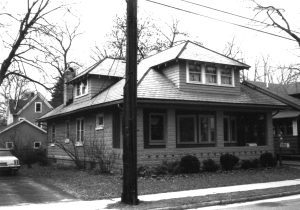
Rushville: Springfield’s Oldest Craftsman Neighborhood
The early 20th century saw the rise of the Craftsman style architecture. It grew out of the Arts & Crafts movement, a reaction to the ornate styles and decor of the Victorian era. Its arrival in Springfield coincided with a building boom in single-family houses in neighborhoods such as Pine Point, Forest Park, Liberty Heights, and East Springfield. The popularity of Craftsman homes also occurred at the same time as use of concrete block for foundations and sometimes for entire houses.
On August 9 the tour will focus on some of the earliest and more unusual Craftsman houses in Springfield. It will leave from the corner of Berkshire Avenue and Dewey Street. On-Street parking is available on Dewey, Hobson, and Elizabeth Streets. The tour starts at 10:30am and ends at 12pm. The tour is $5 for Springfield Preservation Trust, Springfield Museums members, and $10 for non-members, payable in advance on Eventbrite or at the tour's outset. https://www.eventbrite.com/e/rushville-springfields-oldest-craftsman-neighborhood-a-walking-tour-tickets-1341072938259? .
The Second Saturday Tours series explores historic Springfield and is co-presented by the Springfield Preservation Trust and Springfield Museums and is generously sponsored by the Springfield Cultural Council and Mass Cultural Council.

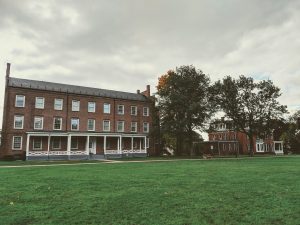
Join us for a walking tour of the historic Hill Shops at the Springfield Armory, with Springfield Armory National Historic Site staff member and tour guide Carl Steele on September 13. Learn about the unique architecture around the green and what the buildings were used for when the Armory was in operation.
This is your opportunity to visit the Springfield Armory National Historic Site that commemorates the role of the nation’s first armory by preserving and interpreting the world's largest historic U.S. military small arms collection, along with historic archives, buildings and landscape. Learn more about the Armory at: https://www.nps.gov/spar
The tour departs from the Springfield Armory. The tour is $5 for Springfield Preservation Trust and Springfield Museums members, and is $10 for non-members, payable in advance on Eventbrite, or in cash or check at the outset of the tour.
The Second Saturday Tours series explores historic Springfield and is co-presented by the Springfield Preservation Trust and Springfield Museums and is generously sponsored by the Springfield Cultural Council and Mass Cultural Council.

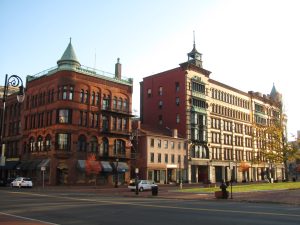
Explore downtown Springfield and learn about the places and people who invented and created in Springfield in its industrial heyday.
Explore downtown Springfield and learn about the places and people who invented and created in Springfield during its industrial heyday with Erica Swallow, the President of Springfield Preservation Trust.
Springfield is the home of the first gas-powered automobile, the monkey wrench, basketball, and so much more. Come see what made Springfield the center of innovation in the late 19th Century, and examine the geographies and buildings where it all began. This will be the final Second Saturday Tour of the 2025 season.
Tour Logistics
The tour departs from the Springfield Museums Welcome Center at 10:30am. The tour is $5 for Springfield Preservation Trust and Springfield Museums members, and is $10 for non-members, payable in advance on Eventbrite, or in cash or check at the outset of the tour at Springfield Museums. Tickets may be reserved online: https://www.eventbrite.com/e/made-in-springfield-places-people-of-springfields-industrial-legacy-tickets-1341085525909
This event is part of the Second Saturday Tours series, co-presented by SPT and Springfield Museums. We are grateful for the support of the Springfield Cultural Council and the Mass Cultural Council, which helps bring these historical explorations to life. Your participation will enrich your understanding of Springfield's history and contribute to the vibrant cultural life of our community.
There are no refunds. SPT looks forward to seeing you there, rain or shine!
About the Tour Guide Erica Swallow is president of the Springfield Preservation Trust board of directors. She also serves as a Springfield Museums Advancement Committee member and Forest Park Civic Association board member, and is a local REALTOR®. She holds an MBA from MIT Sloan and other degrees from NYU Stern and Simmons University, with nearly two decades of marketing experience in the fields of technology and education. Raised in Arkansas and educated in New York and Boston, she chose Springfield as home out of love for its deep history, cultural diversity, and progressive energy. She has served on several Springfield City Council committees and is proud and honored to live in the Forest Park Historic District.

2024 TOURS
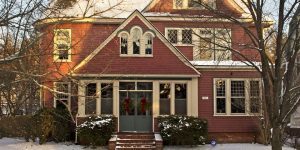
Bring your camera and your questions and join us for this installment of our Second Saturday Walking Tour!
The tour will begin at 10:30 a.m. on April 13th at Washington Blvd at Magnolia Terrace, and will last approximately 1.5 hours. The tour route is about 1 mile in length, along a level path mostly along well-maintained, paved sidewalks. On-street parking is available on Washington Blvd and side streets. Please be sure to not block driveways or fire hydrants.
The tour is $5 for Springfield Preservation Trust and Springfield Museums members, and is $10 for non-members, payable in advance via Eventbrite or check (payable to “Springfield Preservation Trust” and mailed to our office). Exact change or checks are accepted on-site, prior to the start of the tour.
The Second Saturday Walking Tour series is co-presented by the Springfield Preservation Trust and Springfield Museums, and generously sponsored by the Daboul Family Charitable Trust.
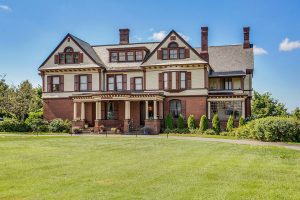
The Valentine Mansion—historically known as the Frederick Harris House—at 270 Maple Street.
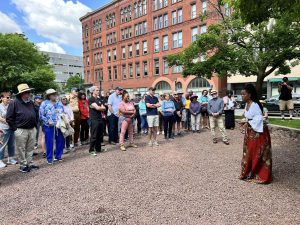
About the Springfield Preservation Trust
Founded in 1972, the Springfield Preservation Trust strives to preserve, protect, and promote properties in Springfield that have architectural or historic significance. As the only non-profit, non-government advocacy group for historic preservation in Springfield, the Trust will continue to be the voice of preservation into the future. To learn more, visit its website at springfieldpreservation.org .
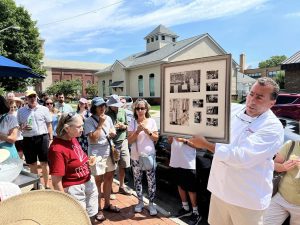
Curious about food history in Springfield? Come learn about the city's delicious past—and taste a bit of the beauty along the way!
Join James Johnson, Executive Vice President of Springfield Preservation Trust, on the August Second Saturday Walking Tour. This walking tour will leave from Springfield Museums and be filled with historic buildings of restaurants and local attractions. Additionally, there will be extra surprises on this tour for each visitor—if you want to learn what those might be then you must attend the tour! This walking tour departs from the Stearns Square.
The tour is $5 for Springfield Preservation Trust and Springfield Museums members, and is $10 for non-members, payable at the outset of the tour. Buy tickets through Eventbrite.
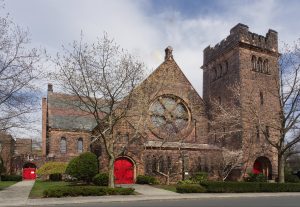
On August 10 at 10:30am, see where Victorian era parishioners worshiped, in this Victorian Era Churches in Downtown Springfield Second Saturday Walking Tour, led by Bob McCarroll, board member and officer-at-large. The tour will start at Springfield Museums.
The tour departs from the Springfield Museums Welcome Center and will stop at:
- The former North Congregational Church, designed by Henry Hobson Richardson
- St. Michael's Cathedral, the oldest Catholic church in Springfield
- Christ Church Cathedral, designed by Lord & Fuller of Boston
- South Congregational Church, called one of the finest examples of the High Victorian Gothic Revival style in America.
We will enter at least three churches, barring weddings or church services.
The tour is $5 for Springfield Preservation Trust and Springfield Museums members, and is $10 for non-members, payable in advance on Eventbrite, or in cash or check at the outset of the tour.
The Second Saturday Walking Tour series is co-presented by the Springfield Preservation Trust and Springfield Museums, and generously sponsored by the Daboul Family Charitable Trust.
Springfield Armory: The Nation’s First Armory (A Walking Tour)
September 14 @ 10:30 am - 12:00 pm
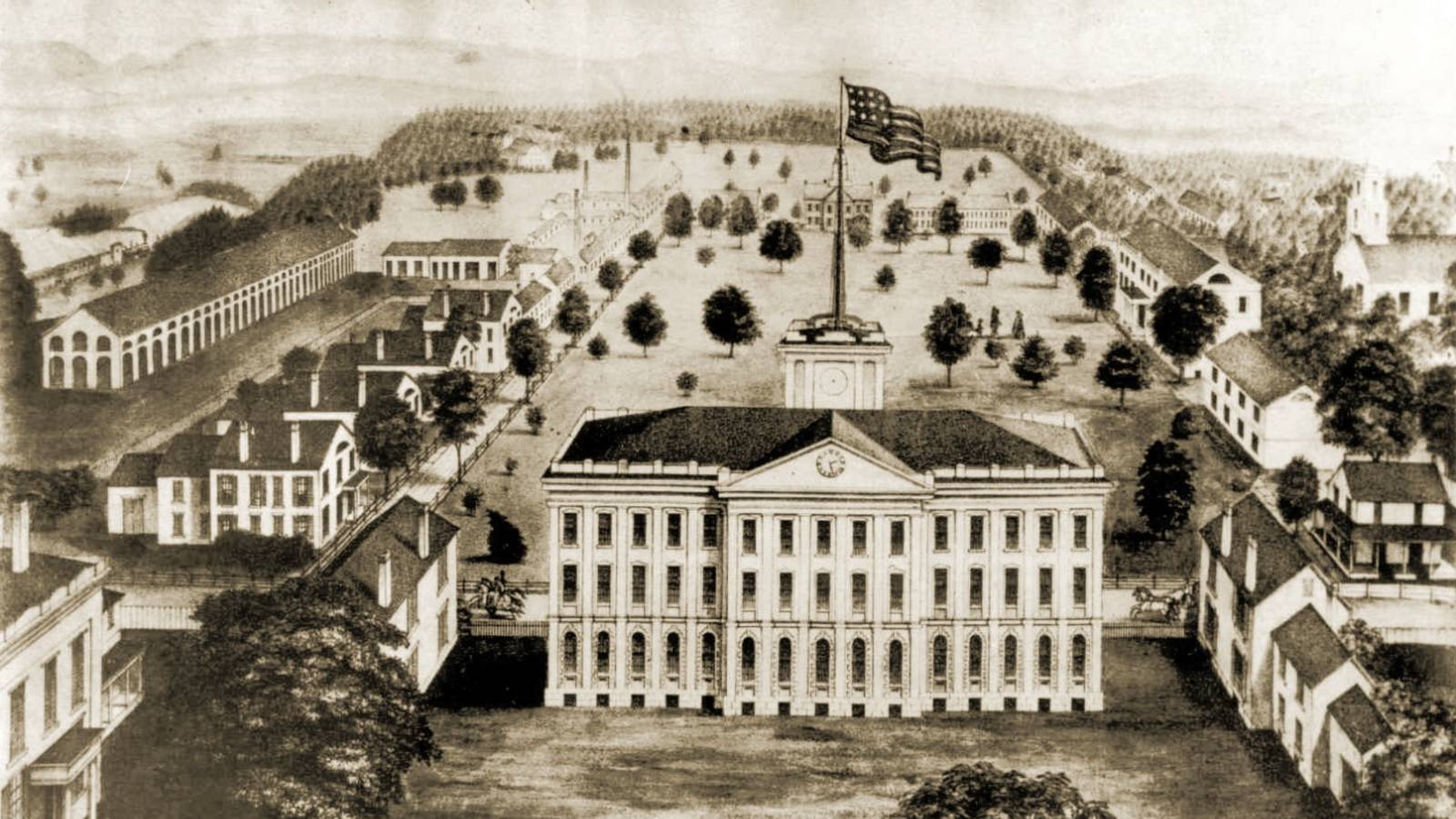
See the Springfield Armory National Historic Site that commemorates the role of the nation’s first armory by preserving and interpreting the world’s largest historic U.S. military small arms collection, along with historic archives, buildings and landscape.
On this tour, attendees will explore the architectural details of buildings on the armory site, including the Springfield Technical Community College (STCC) campus and Springfield Armory Museum. Attendees will also explore the Museum collection.
Learn more about the Armory at: nps.gov/spar
The tour departs from the Springfield Armory. The tour is $5 for Springfield Preservation Trust and Springfield Museums members, and is $10 for non-members, payable in advance on Eventbrite, or in cash or check at the outset of the tour.
The Second Saturday Walking Tour series is co-presented by the Springfield Preservation Trust and Springfield Museums, and generously sponsored by the Daboul Family Charitable Trust.
Join the Springfield Preservation Trust for a walk around downtown Springfield to explore the legacy of the City during the Gilded Age, American’s most prosperous period. This tour will be guided by Westfield Athenaeum Executive Director Guy McLain and features art and architecture across Springfield’s metropolitan landscape. The tour will leave from Springfield Museums Welcome Center at 10:30am rain or shine! The tour is $5 for members and $10 for non-members. Please purchase tickets through Eventbrite.
Mark Twain described America in the late nineteenth century as a Gilded Age. And indeed, the country experienced economic growth that hasn't been matched before or since. But it wasn't just a time for building new factories and businesses. A significant portion of the wealth created at this time was funneled into the arts. Museums, libraries, colleges, orchestras, and opera houses were established at a rate that seems astounding today. Springfield, just 25 miles north of Twain's home in Hartford, was a perfect example of the prosperity that he was describing. During the Gilded Age, Springfield citizens founded most of the cultural institutions, monuments, and civic buildings that still serve the city today. Also influencing art and architecture at this time was the City Beautiful Movement. This movement was dedicated to advocating for civic structures that would bring greater beauty and cohesion to American cities. Springfield fully embraced the principles of this movement, and as a result, some of the most beautiful buildings in the city today were products of this time.

About the Tour Guide
Guy McLain, currently the Executive Director of the Westfield Athenaeum, has been devoted to the preservation and dissemination of Western Massachusetts history for more than 40 years. Prior to his current appointment in Westfield he served on the staff of the University of Massachusetts Archives, was the Special Collections Librarian and Archivist for the Springfield City Library, and was the founding Director of the Wood Museum of Springfield History. He is the author of the Pioneer Valley: a Pictorial History (1991), and a novel titled Drawing Without an Eraser (2020). He has also published in the Historical Journal of Massachusetts and is the editor of the book Springfield Fights the Civil War.
About Second Saturday Walking Tour
The Second Saturday Walking Tour series is co-presented by the Springfield Preservation Trust and Springfield Museums, and generously sponsored by the Daboul Family Charitable Trust.
2023 TOURS
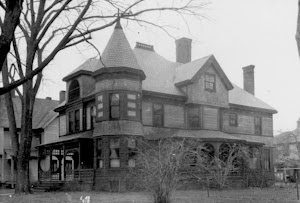
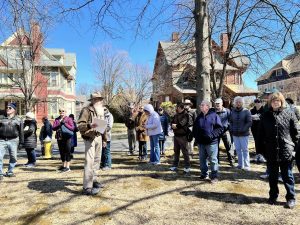
Join us, April 8 for the “Great Houses of the McKnight Historic District” walking tour, part of our Second Saturday Walking Tour series.
The McKnight Neighborhood contains 800 homes and was developed from 1870-1900 by the McKnight Brothers. The city’s first Street Car suburb, it is still the largest intact wood frame Victorian neighborhood in New England.
Participants will learn about the history and architecture of the McKnight neighborhood and see some of the great houses that led to Springfield being called “The City Of Homes.” We will wander down Dartmouth Terrace, Worthington Street, Ingersoll Grove, and parts of Florida and Bowdoin Streets. These areas developed in the 1880s feature some of the biggest, most grand houses built in the neighborhood.
The tour will be conducted by Jim Boone, who is a long-time Springfield Preservation Trust Board Member and boasts 47 years of residency in the McKnight neighborhood. The tour begins at Thompson Triangle, the intersection of Worthington St and Saint James Ave.
The Second Saturday Walking Tour series is co-presented by the Springfield Preservation Trust and Springfield Museums, and is sponsored by a grant from the Springfield Cultural Council and the Mass Cultural Council.
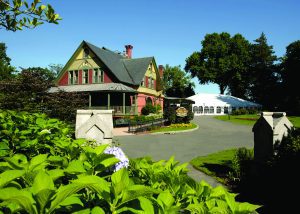
The May 13th walking tour will be presented by John Bilodeau who will give a tour of the Carriage House at the Barney Estate. The Second Saturday walking tour will be at the Carriage House at the Barney Estate in celebration of the 140th Anniversary of the Springfield Park Department, join us for the Second Saturday Walking Tour of The Carriage House at the Barney Estate in Forest Park. Please enter through the Route 5 entrance, say you are there for the Carriage House and they should give you a ticket. Then proceed to the parking area and once you park the car please meet the guide at white tent. Parking is free for attendees of the tour.
Guests will learn the fascinating history behind the carriage house, built during the Victorian era. Once an integral part of the vast estate of inventor and philanthropist Everett Hosmer Barney, the carriage house is one of the only original structures still standing on the grounds. The Carriage House was built in 1890 and has been lovingly restored and reinvented. Its timeless charm and beauty is something to behold. The Second Saturday Walking Tours season is sponsored by Mass Cultural Council, Springfield Cultural Council, and the Springfield Museums.
This tour will be free. The tour group will start at the Carriage House at the Barney Estate at 10:30 AM on May 13 and leave promptly to start the tour.
Brought to you by the City of Springfield Department of Parks, Buildings and Recreation Management. The Second Saturday Walking Tour series is co-presented by the Springfield Preservation Trust and Springfield Museums, and is sponsored by a grant from the Springfield Cultural Council and the Mass Cultural Council.
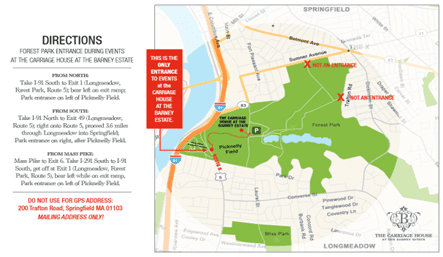
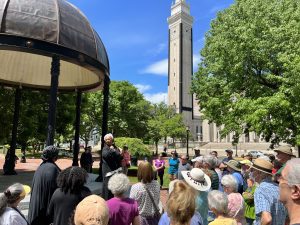
The Underground Railroad in Springfield, presented with PAHMUSA
Visit locations and meet people that salute the perseverance, ingenuity, and resilience of some of Springfield’s unsung early residents. The Underground Railroad was comprised of many people and places—Springfield was an important destination for freedom seekers and activists like Frederick Douglass, Sojourner Truth, and John Brown.
Join the Springfield Preservation Trust, in partnership with the Pan African Historical Museum USA (PAHMUSA) for this Second Saturday Walking Tour. Special thank you to PAHMUSA Executive Director Sam Bradley for leading the organization and research of this tour.
This walking tour departs from Tower Square. The docents will meet the tour at the Main Street entrance. The tour is free.
The Second Saturday Walking Tour series is co-presented by the Springfield Preservation Trust and Springfield Museums, and is sponsored by a grant from the Springfield Cultural Council and the Massachusetts Cultural Council.
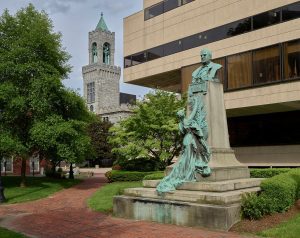
On July 8, Bob McCarroll, board member of the Springfield Preservation Trust since its establishment, will lead the Springfield Art Walking Tour, which will explore historic works of art scattered throughout Downtown. The tour will depart at 10:30 a.m. from Springfield Museums
This walking tour departs from the Springfield Museums. The tour is free for Springfield Preservation Trust and Springfield Museums members, and is $5 for non-members, payable at the outset of the tour.
The Second Saturday Walking Tour series is co-presented by the Springfield Preservation Trust and Springfield Museums, and is sponsored by a grant from the Springfield Cultural Council and the Massachusetts Cultural Counci

Curious about food history in Springfield? Come learn about the city's delicious past—and taste a bit of the beauty along the way!
Join James Johnson, Executive Vice President of Springfield Preservation Trust, on the August Second Saturday Walking Tour. This walking tour will leave from Springfield Museums and be filled with historic buildings of restaurants and local attractions. Additionally, there will be extra surprises on this tour for each visitor—if you want to learn what those might be then you must attend the tour! This walking tour departs from the Springfield Museums.
The tour is free for Springfield Preservation Trust and Springfield Museums members, and is $5 for non-members, payable at the outset of the tour.
Join local historian Derek Strahan on a walking tour of the Forest Park Heights Historic District neighborhood. The tour will focus on the homes on the southern side of Sumner Avenue, with an emphasis on the variety of architectural styles within the neighborhood. The tour will begin at 10:30 a.m. on Sept. 9 at the Florentine Gardens circle and will last approximately 1.5 hours. The tour route is about 1.5 miles in length, on mostly level ground.
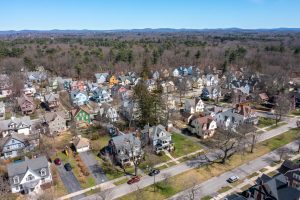
On-street parking is available on the neighborhood streets. Please be sure to not block driveways or fire hydrants.
The Second Saturday Walking Tour series is co-presented by the Springfield Preservation Trust and Springfield Museums, and is sponsored by a grant from the Springfield Cultural Council and the Massachusetts Cultural Council.
Maple-High & Six Corners Neighborhood | Second Saturday Walking Tour
Learn about the legacy, architecture, and neighborhood that surrounds one of Springfield’s most important historical business figures—Daniel B. Wesson, of Smith & Wesson fame.
On this walking tour, Preservation Trust Board Member Katherine Anderson Benson will provide a history of the Wesson Hospitals, the C.W. Porter School, and the beautiful homes that line the streets of the Six Corners neighborhood, where these structures reside. The walking tour departs from the rear of the High School of Commerce (Springfield Honors Academy entrance) and ends at the same.
The Six Corners neighborhood of Springfield once encompassed two of the city's premier medical facilities—Wesson Memorial Hospital and the Wesson Maternity Hospital—founded by Daniel B. Wesson, also the co-founder of Springfield-based firearm manufacturer Smith & Wesson. Surrounded by beautiful homes, the neighborhood was also once home to Miss Charlotte Porter's School, a preeminent private school for girls.
The tour is free for Springfield Preservation Trust and Springfield Museums members, and is $5 for non-members, payable at the outset of the tour.
The Second Saturday Walking Tour series is co-presented by the Springfield Preservation Trust and Springfield Museums, and is sponsored by a grant from the Springfield Cultural Council and the Massachusetts Cultural Council.
PAST TOURS

On November 12, Jim Boone, long time member of the Board of SPT and resident of the McKnight Neighborhood for 46 years, led a free tour of the Historic McKnight Neighborhood. The free tour started at Thompson Triangle, intersection of Worthington and Saint James Ave. Thank you Mass Cultural Council and Springfield Cultural Council for sponsoring the 2022 tours.
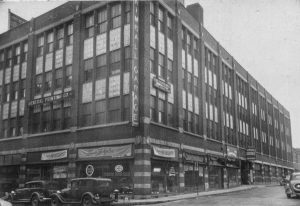
On October 8, Kira Holmes led the Second Saturday walking tour Successes and Losses of the Most Endangered List at 10:30 a.m. Buildings on this tour might have started before the SPT Most Endangered List. The tour departed from Springfield Museums for $5 if you were not an SPT or Springfield Museums member. This tour explored some historic Springfield buildings that are currently on the SPT Most Endangered List. Additionally this tour explored how some previously endangered buildings have moved off the list to successful futures or have been lost to future generations. The SPT walking tours this season were sponsored by the Springfield Cultural Council and Mass Cultural Council.
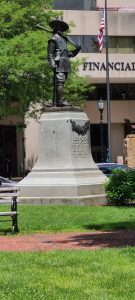
Guy McLain led the Second Saturday walking tour on September 10 at 10:30am. The tour departed from Springfield Museums and costed $5 if you were not an SPT or Springfield Museums member. Mark Twain described America in the late nineteenth century as a Gilded Age. A significant portion of the wealth created at this time was funneled into the arts. Museums, libraries, colleges, orchestras, and opera houses were established at a rate that seems astounding today. Springfield, just 25 miles north of Twain's home in Hartford, was a perfect example of the prosperity that he was describing. During the Gilded Age Springfield citizens founded most of the cultural institutions, monuments, and civic buildings that still serve the city today. Also influencing art and architecture at this time was the City Beautiful Movement. This walk explored around downtown Springfield and the legacy of this important era. The SPT walking tours this season were sponsored by the Springfield Cultural Council and Mass Cultural Council.
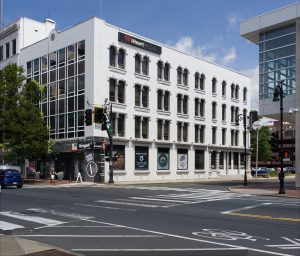
Robert McCarroll will led the Second Saturday walking tour on August 13 at 10:30am. The tour departed from Springfield Museums and cost $5 if you were not an SPT or Springfield Museums member. This tour explored the older buildings behind newer facades. The SPT walking tours were sponsored by the Springfield Cultural Council and Mass Cultural Council.

Derek Strahan led the Second Saturday walking tour on July 9 at 10:30am. It will started at Riverfront Park, at the parking lot directly across from the end of State Street. No fee was charged. The Springfield Preservation Trust walking tours in 2022 were sponsored by the Springfield Cultural Council and Mass Cultural Council.
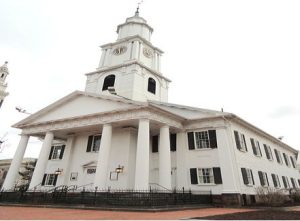 This Second Saturday Walking Tour was titled Underground Railroad. The tour began outside of Springfield Museums. If you were a member to Springfield Museums, Springfield Preservation Trust, or PAHMUSA you were free. If not you paid $5 at Springfield Museums. This tour taught the history of Springfield's unsung early residents. Please if you had questions email info@springfieldpreservation.org. The Second Saturday walking Tour season was sponsored by the Mass Cultural Council and the Springfield Cultural Council. Thank you so much!
This Second Saturday Walking Tour was titled Underground Railroad. The tour began outside of Springfield Museums. If you were a member to Springfield Museums, Springfield Preservation Trust, or PAHMUSA you were free. If not you paid $5 at Springfield Museums. This tour taught the history of Springfield's unsung early residents. Please if you had questions email info@springfieldpreservation.org. The Second Saturday walking Tour season was sponsored by the Mass Cultural Council and the Springfield Cultural Council. Thank you so much!
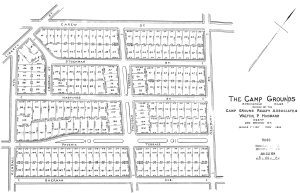 The first Second Saturday Walking Tour was titled Springfield’s Advent Campgrounds. Everyone who attends will learn the story of relocating summer cottages to make way for a new neighborhood of Craftsman style homes. The tour departed at 10:30am on May 14 from the Intersection of Phoenix and Freeman Terraces (off Carew St. in the Hungry Hill neighborhood). The tour was free and led by Ben Murphy. Please if you have questions email info@springfieldpreservation.org. The Second Saturday walking Tour season was sponsored by the Mass Cultural Council and the Springfield Cultural Council. Thank you so much!
The first Second Saturday Walking Tour was titled Springfield’s Advent Campgrounds. Everyone who attends will learn the story of relocating summer cottages to make way for a new neighborhood of Craftsman style homes. The tour departed at 10:30am on May 14 from the Intersection of Phoenix and Freeman Terraces (off Carew St. in the Hungry Hill neighborhood). The tour was free and led by Ben Murphy. Please if you have questions email info@springfieldpreservation.org. The Second Saturday walking Tour season was sponsored by the Mass Cultural Council and the Springfield Cultural Council. Thank you so much!
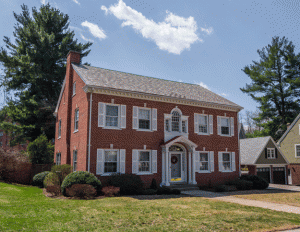
The SPT Spring House Tour featured homes in Forest Park Heights. The tour was held in the area north of Sumner Avenue, which was developed in the early twentieth century by the McKnight family.
Featured were Tudor Revival and Colonial Revival style homes on Riverview Terrace, an American Foursquare style home on Mountainview Street, and English Cottage style homes on Randolph and Oxford Streets.
generously sponsored by
![]()
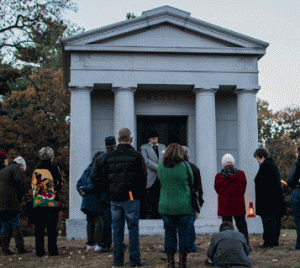 Groups led by docents visited six graves of interesting nineteenth-century Springfield residents where costumed interpreters spoke about that person. Hour-long walking tours departed every fifteen minutes starting at 3:00 PM from the former chapel at Oak Grove Cemetery, 426 Bay Street.
Groups led by docents visited six graves of interesting nineteenth-century Springfield residents where costumed interpreters spoke about that person. Hour-long walking tours departed every fifteen minutes starting at 3:00 PM from the former chapel at Oak Grove Cemetery, 426 Bay Street.
generously sponsored by
![]()

This Spring House Tour featured distinct homes in four different historic districts of Springfield. Lovely homes in the Forest Park, McKnight, Lower Maple, and Mattoon Street historic districts opened their doors. Starting May 23rd, tickets will be available at Flowers, Flowers, 758 Sumner Avenue, The Flowers Box at 596 Carew Street, or by purchasing them online below. Tickets will also be available on the day of the tour from 12:45 to 2:30 on Thompson Street near Worthington Street in McKnight.
generously sponsored by
![]()
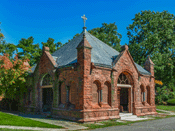
Groups led by SPT docents visited six graves of nineteenth-century Springfield residents, including philanthropist Primus Mason, chain store pioneer Lyman Besse, and other interesting residents of Springfield’s past. Costumed interpreters spoke at each stop about that person. Hour-long walking tours departed every fifteen minutes from the former chapel and seasonal refreshments were served.
90-acre Oak Grove Cemetery was opened for burials in 1882. The Springfield architectural firm of Richmond & Seabury designed the brownstone entrance arch and Romanesque hillside chapel, behind which bodies were stored in winter to await the thaw for burial.
Voices from the Grave Cemetery Tour generously sponsored by
DABOUL FAMILY CHARITABLE TRUST
![]()
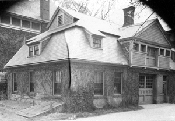 Few accessory buildings such as carriage houses survive in the city. Once they were no longer needed, they were replaced or allowed to fall into ruin. This tour highlighted how some of them continue to function in a variety of uses. Featured were a carriage house now an apartment on Bowdoin Street, one now offices on Temple Street, one now a house on Crescent Hill, one with its original stables on Bellevue Avenue, and one now an apartment on Longhill Street. Additionally, a renovated Victorian home on Temple Street was open.
Few accessory buildings such as carriage houses survive in the city. Once they were no longer needed, they were replaced or allowed to fall into ruin. This tour highlighted how some of them continue to function in a variety of uses. Featured were a carriage house now an apartment on Bowdoin Street, one now offices on Temple Street, one now a house on Crescent Hill, one with its original stables on Bellevue Avenue, and one now an apartment on Longhill Street. Additionally, a renovated Victorian home on Temple Street was open.
 in Partnership with the Mattoon Association
in Partnership with the Mattoon Association
In the 1860s, the east side of Chestnut Street was lined with large estates. In 1870, William Mattoon, a wholesale grain dealer, purchased one to open a new street through the property and began selling lots. Over the next twenty years, local builders constructed attached brick houses, making Mattoon Street one of the few streets in Western Massachusetts lined with such urban structures. Forty years ago, the Springfield City Council and Mayor Frank Freeman established the first local historic district in Springfield to protect this unique area.
SPT and the Mattoon Association are both marked their 40th anniversary. They are volunteer, private, nonprofit organizations. SPT works to preserve Springfield’s built environment. The Association works to maintain its neighborhood and sponsors the annual Arts Festival.
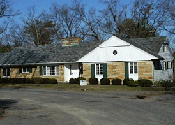 This tour breaks new ground for SPT by featuring homes developed after World War II. Little construction had occurred during the Great Depression and the war leading to a building boom being in 1945 to meet the pent-up demand for housing. Widespread automobile ownership opened areas not previously accessible by bus and streetcar. Garages changed from being detached structures in the back yard to being attached to the house. Lots grew wider to accommodate the garages and houses became less compact since walking to public transit was no longer required. Expansive front porches disappeared in favor of private patios in back yards. Homes from the late 1940s and early 1950s include one-story Ranches-a style imported from California–and one and a half story Executive Capes-adapted from our own New England tradition. In Springfield, these homes often were decorated with Colonial Revival features.
This tour breaks new ground for SPT by featuring homes developed after World War II. Little construction had occurred during the Great Depression and the war leading to a building boom being in 1945 to meet the pent-up demand for housing. Widespread automobile ownership opened areas not previously accessible by bus and streetcar. Garages changed from being detached structures in the back yard to being attached to the house. Lots grew wider to accommodate the garages and houses became less compact since walking to public transit was no longer required. Expansive front porches disappeared in favor of private patios in back yards. Homes from the late 1940s and early 1950s include one-story Ranches-a style imported from California–and one and a half story Executive Capes-adapted from our own New England tradition. In Springfield, these homes often were decorated with Colonial Revival features.
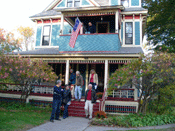
The tour will open six grand Victorian-era homes dating from the 1880s and 1890s on Worthington Street, Florida Street, Ingersoll Grove, Clarendon Street, and Dartmouth Terrace–all within easy walking distance. McKnight is the largest, most intact, late-nineteenth-century, a wood-frame neighborhood in New England. Among its more than 800 houses are some of the most elegant homes in the Pioneer Valley. Join SPT to tour some of these lovely homes at this magical time of day and season.
The McKnight Twilight Tour generously sponsored by
![]()
 The 2011 Spring House Tour in Atwater Park featured five homes in the area of Atwater Terrace and Springfield Street. Much of the Atwater neighborhood was developed from the 300-acre estate of George Atwater, founder of the Springfield Street Railway. Ten years after his death in 1902, the Atwater heirs hired the Boston firm of Frederick Law Olmsted, Jr. to create a plan for a pleasant residential area. Chestnut Street Home
The 2011 Spring House Tour in Atwater Park featured five homes in the area of Atwater Terrace and Springfield Street. Much of the Atwater neighborhood was developed from the 300-acre estate of George Atwater, founder of the Springfield Street Railway. Ten years after his death in 1902, the Atwater heirs hired the Boston firm of Frederick Law Olmsted, Jr. to create a plan for a pleasant residential area. Chestnut Street Home
Several noted local architects were involved in designing houses. Eugene Gardner and his son George worked on more than a dozen homes. Napoleon Russell and his partner Fred Knowlton designed numerous homes and also helped develop the area around Shefford and Caseland Streets. Max Westhoff, who designed the old Shriners Hospital and the Connecticut Valley History Museum, also worked on homes.
The neighborhood’s park-like setting, proximity to Springfield Hospital, and access to the trolley line encouraged development. Prior to the Great Depression, many houses were built in the popular Colonial Revival and Tudor Revival styles. Noted residents over the years include early aviatrix Maude Tait Moriarty, impressionist painter Harriet Randall Lumis, cork-centered baseball inventor Milton Reach, and Mass Mutual president Betrand Perry.
The Atwater Park Tour of Historic Homes generously sponsored by
![]()
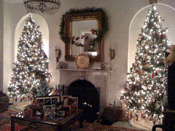 The Springfield Preservation Trust held a tour of homes throughout the historic neighborhoods of Springfield to celebrate the spirit of the season. The tour featured six historic homes decorated for Christmas or Hanukkah in Forest Park, McKnight, and Downtown.
The Springfield Preservation Trust held a tour of homes throughout the historic neighborhoods of Springfield to celebrate the spirit of the season. The tour featured six historic homes decorated for Christmas or Hanukkah in Forest Park, McKnight, and Downtown.
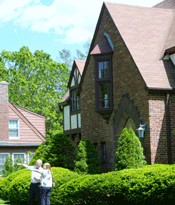 The 2010 Spring House Tour in Forest Park featured six homes in the area south of Sumner Avenue, between Dickinson Street and Forest Park. Much of the area was developed as Entry Dingle Heights, located in a section of Longmeadow annexed to Springfield in the early twentieth century. Construction of most homes in the neighborhood took place between 1920 and 1940 and reflects the popular Colonial Revival style and English Cottage style, a variation of the Tudor Revival style. French-Canadian builders such as Joseph Chapdelaine, Joseph St. Laurent, Maurice Angers, and Zephrine Lassonde were prominent in the creation of the area.
The 2010 Spring House Tour in Forest Park featured six homes in the area south of Sumner Avenue, between Dickinson Street and Forest Park. Much of the area was developed as Entry Dingle Heights, located in a section of Longmeadow annexed to Springfield in the early twentieth century. Construction of most homes in the neighborhood took place between 1920 and 1940 and reflects the popular Colonial Revival style and English Cottage style, a variation of the Tudor Revival style. French-Canadian builders such as Joseph Chapdelaine, Joseph St. Laurent, Maurice Angers, and Zephrine Lassonde were prominent in the creation of the area.
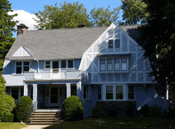 Besides being Springfield’s largest local historic district, Forest Park Heights is one of the most elegant turn-of-the-century neighborhoods in Western Massachusetts. Residential development was spurred in the 1890s by the expansion and electrification of the trolley system, which connected the suburban neighborhood to Downtown. Creation of nearby Forest Park was a further incentive for people to live in the area. More than 600 houses were constructed over a 35-year period. The area north of Sumner Avenue was primarily developed by the McKnight family, which also developed the McKnight and Ridgewood areas.
Besides being Springfield’s largest local historic district, Forest Park Heights is one of the most elegant turn-of-the-century neighborhoods in Western Massachusetts. Residential development was spurred in the 1890s by the expansion and electrification of the trolley system, which connected the suburban neighborhood to Downtown. Creation of nearby Forest Park was a further incentive for people to live in the area. More than 600 houses were constructed over a 35-year period. The area north of Sumner Avenue was primarily developed by the McKnight family, which also developed the McKnight and Ridgewood areas.
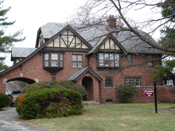 The Springfield Preservation Trust Spring House Tour focused on homes on and off the length of Maple Street, one of the city’s oldest streets. Maple Street was opened in the early nineteenth century to connect Downtown to the various mills along the Mill River. Homes on the tour ranged from the Queen Anne style 1897 George Merriam house to a unit in the 1989 Wyndhurst Condominiums. Also, open was a portion of our current rehabilitation project, the 1832 Female Seminary.
The Springfield Preservation Trust Spring House Tour focused on homes on and off the length of Maple Street, one of the city’s oldest streets. Maple Street was opened in the early nineteenth century to connect Downtown to the various mills along the Mill River. Homes on the tour ranged from the Queen Anne style 1897 George Merriam house to a unit in the 1989 Wyndhurst Condominiums. Also, open was a portion of our current rehabilitation project, the 1832 Female Seminary.
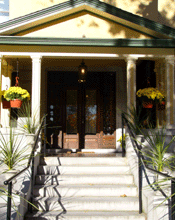 Developed between 1870 and 1900, McKnight is the largest and most intact, wood-frame, a late-nineteenth-century neighborhood in New England. Among its more than 800 houses are some of the most elegant homes in Springfield. The tour featured homes built between 1886 and 1903. They reflect Stick, Queen Anne, Tudor Revival, and English Cottage styles, including the Besse Mansion, one of the largest homes in the district.
Developed between 1870 and 1900, McKnight is the largest and most intact, wood-frame, a late-nineteenth-century neighborhood in New England. Among its more than 800 houses are some of the most elegant homes in Springfield. The tour featured homes built between 1886 and 1903. They reflect Stick, Queen Anne, Tudor Revival, and English Cottage styles, including the Besse Mansion, one of the largest homes in the district.
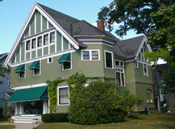 Forest Park Heights is the largest and most elegant late nineteenth/early twentieth-century neighborhood in Western Massachusetts. Residential development was spurred in the 1890s with the expansion of the electrified trolley system and the creation of Forest Park. The following 30 years saw the construction of the 600 houses now protected as a historic district.
Forest Park Heights is the largest and most elegant late nineteenth/early twentieth-century neighborhood in Western Massachusetts. Residential development was spurred in the 1890s with the expansion of the electrified trolley system and the creation of Forest Park. The following 30 years saw the construction of the 600 houses now protected as a historic district.
The Springfield Preservation Trust House Tour will open homes south of Sumner Avenue. Colonial Revival and Shingle-style homes predominate in this area, developed by the Forest Park Heights Company headed by Lewis Newman.
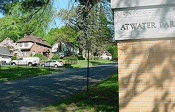 Much of the Atwater neighborhood was developed from the 300-acre estate of George Atwater, founder of the Springfield Street Railway. Ten years after his death in 1902, the Atwater heirs hired the Boston firm of Frederick Law Olmsted, Jr. to create a plan for a pleasant residential area.
Much of the Atwater neighborhood was developed from the 300-acre estate of George Atwater, founder of the Springfield Street Railway. Ten years after his death in 1902, the Atwater heirs hired the Boston firm of Frederick Law Olmsted, Jr. to create a plan for a pleasant residential area.
Several noted local architects were involved in designing houses. Eugene Gardner and his son George worked on more than a dozen homes. Napoleon Russell and his partner Fred Knowlton designed numerous homes and also helped develop the area around Shefford and Caseland Streets. Max Westhoff, who designed the old Shriners Hospital and the Connecticut Valley History Museum, also worked on homes.
The neighborhood’s park-like setting, proximity to Springfield Hospital, and access to the trolley line
encouraged development. (A remnant of the trolley tracks can be seen at Atwater Road and Crestwood Street). Prior to the Great Depression, many houses were built in the popular Colonial Revival and Tudor Revival styles. Noted residents over the years include early aviatrix Maude Tait Moriarty, impressionist painter Harriet Randall Lumis, cork-centered baseball inventor Milton Reach, and Mass Mutual president Betrand Perry.
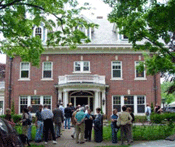 Forest Park Heights is the Pioneer Valley’s largest local historic district and one of its most elegant turn-of-the-20th century neighborhoods. Development was spurred in the 1890s by the expansion of the trolley system as well as the creation of Forest Park. Over the next 35 years, more than 600 houses were built.
Forest Park Heights is the Pioneer Valley’s largest local historic district and one of its most elegant turn-of-the-20th century neighborhoods. Development was spurred in the 1890s by the expansion of the trolley system as well as the creation of Forest Park. Over the next 35 years, more than 600 houses were built.
Bellevue Avenue and Marengo Park were laid out as “Belmont Heights” by local builder and industrialist Diodate Swan. Mr. Swan died in 1895, and his children developed the area. Most houses were constructed after 1900 in the popular Colonial Revival and Tudor Revival styles. All three of his sons as well as his widow lived on Bellevue Avenue.
Homes featured today are Colonial Revival style, which began after the Centennial Exposition of 1876 sparked renewed interest in the country’s colonial past. It soon became the most popular style in the East. Such houses were more symmetrical than Victorian houses and featured classically inspired decoration.

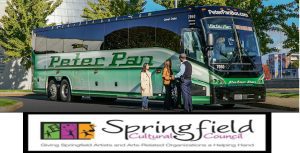
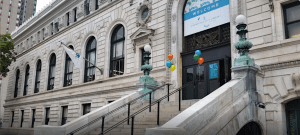
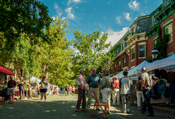 in Partnership with the Mattoon Association
in Partnership with the Mattoon Association